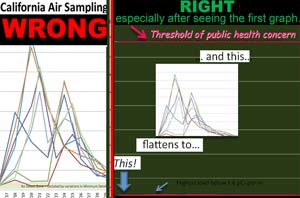
Professors: Fukushima has emerged as global threat — Major health concerns along west coast — Bioaccumulation expected to keep rising for decades — Gov’t failing to inform public of looming long-term radioactive hazard… Instead, official gives tips on how to disguise radiation levels from public (PHOTO)
ENE News
SETAC — Prof. J. Alava and F.A. Gobas, Simon Fraser Univ., Nov. 13, 2014: [T]o track the long term fate and bioaccumulation of 137Cs in marine organisms… we assessed the bioaccumulation potential of 137Cs in a North West Pacific food-web… [Specifically, the] marine mammalian food web… outcomes showed that 137Cs can be expected to bioaccumulate gradually… [The] magnification factor for 137Cs [was] from 5.0 at 365 days of simulation to 30 at 10,950 days. From 1 year to 30 years of simulation, the 137Cs activities predicted in the male killer whale were 6.0 to 182 times 137Cs activities in its major prey [Chinook salmon]… This modeling work showed that in addition to the ocean dilution of 137Cs, a magnification of this radionuclide takes place in the marine food web over time.
SETAC — Dr. Erica Frank, Univ. of British Columbia, Nov. 13, 2014: [Fukushima Daiichi is causing] ongoing radioactive contamination of coastal waters, and eventually the Pacific Ocean. This has spurred worldwide concern around conservation of marine plants… animals [and] human health… [The] accident has important implications for public and environmental health policy in North America… there is the lingering question of the effects of long-term exposure, bioaccumulation of 137Cs in marine food webs, and potential health effects on human populations. Despite all of these concerns, there is currently a paucity of [gov't] monitoring…
Ali Hamade, Alaska’s Environmental Public Health Program Director (pdf), 2014:
- p.15: Possible Consequences of Misinformation on Radiation — Not eating healthful… foods; Losses [of] jobs, money; Undue stress
- p.16: Data..delivers WRONG message
- p.17: Same data with public health concern reference level…delivers RIGHT message especially after seeing first graph.. and this… flattens to.. This!
- Note: Some text is hidden on p. 16-17. Try ‘select all’ then copy & paste.
Published: October 8th, 2014 at 7:56 pm ETBy ENENews |

